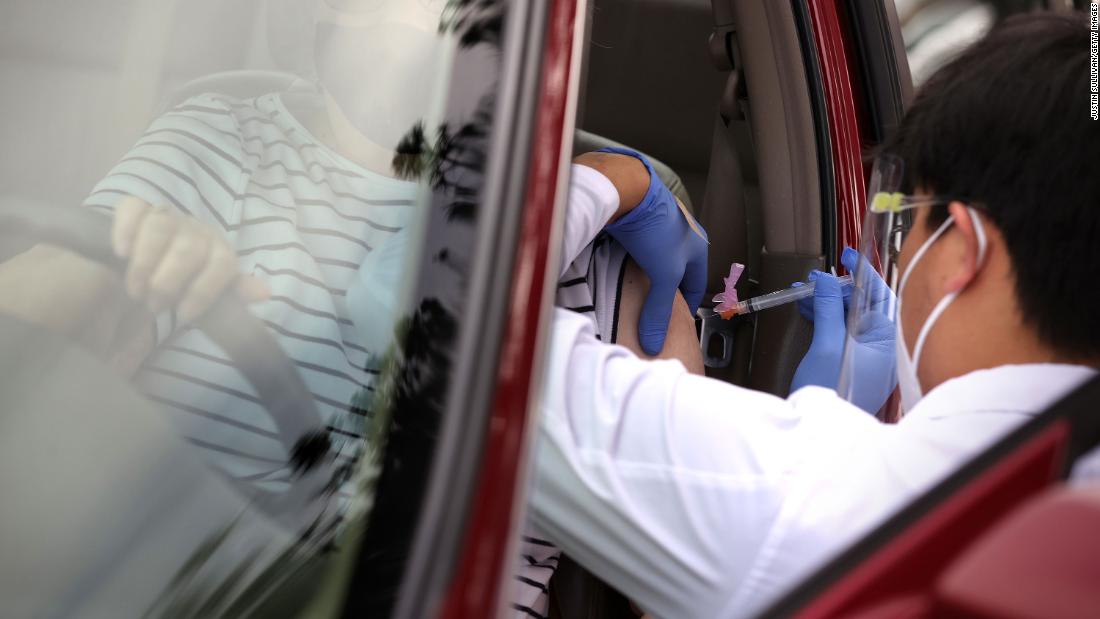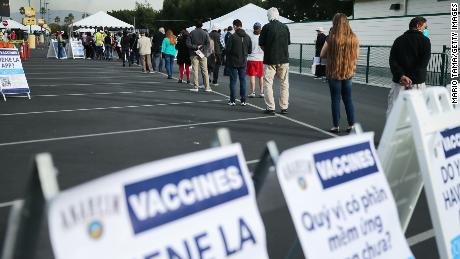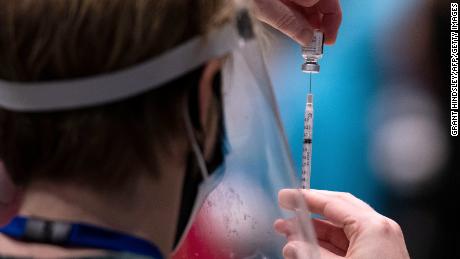Even as the pace increases, experts warn it’s still not enough. The issue boils down to two main problems.
They are waiting for a coronavirus vaccine. Every day for a week, her daughter, Maria — who lives in the same household with her two children — has tried to get on the county’s website to make an appointment. And every time, Maria is told there is no availability.
Meanwhile, Covid-19 has ravaged their densely populated section of Long Beach; just last week the disease claimed the life of a neighbor.
“I can’t even walk in the park — I’m afraid,” Requejo said. “We are surrounded by Covid.”
Earlier this month in Fort Myers, Florida, seniors spent a night lined up outside a local health office for the chance to get their coronavirus vaccine. In Phoenix, computer glitches sent health workers driving across the state to remote vaccination locations.
Although the reasons for the holdups vary depending on the state and county, the primary causes boil down to two problems: a shortage of supply and the unpredictability of shipment sizes, say more than a dozen experts and health officials who spoke with CNN.
Meanwhile, there is concern among state and local health officials that the supply crunch will leave people who have gotten one dose of the vaccine unable to get the second and final dose in time.
Some chalk up the logistical nightmare to the lack of a central message from Operation Warp Speed, the federal initiative to inoculate Americans.
“It feels like the feds’ plan stopped at the state borders, and the states expected the feds’ plan to stop at people’s arms,” Dr. Amy Compton-Phillips, chief clinical officer for Providence health system, which includes 51 hospitals, told CNN. “I think having a federal plan would absolutely stop the kind of ‘Hunger Games’ approach to every individual state, every individual county scrambling for their own set of rules.”
President Joe Biden has said he intends to ramp up vaccinations in the coming weeks.
The pace of vaccination has been accelerating. Until last week, the US was administering about 462,000 doses a day. That rose to nearly a million over the last week.
And the administration announced that while it remains committed, for now, to delivering 100 million doses in the first 100 days — an average of 1 million a day — it will boost weekly supply, increase transparency and purchase additional vaccine from the two companies with circulating vaccines, Pfizer and Moderna.
The goal of the plan is to fully vaccinate 300 million Americans by summer’s end and achieve herd immunity, in which the percentage of the immunized population is so high that person-to-person transmission becomes unlikely.
Vaccine demand outpacing supply
Noting the dangerous new variants, Hotez said time is of the essence, and stressed that other vaccines in addition to the two versions in use need to quickly be authorized.
“The variant seems to be accelerating and is scaring the crap out of everyone, including me,” said Hotez, dean of the National School of Tropical Medicine at Baylor College of Medicine in Texas.
Both vaccine makers — Pfizer and Moderna — say they are on track to provide the federal government 200 million doses each by July 31, as outlined in their contracts.
“Production and releases are not linear and we have explained that we have been successfully scaling up our production yields over time,” said a Moderna spokesperson.
Still, the granular, day-to-day realities of getting vaccines into the arms of people has been a logistical nightmare for many providers across America.
Officials in Louisiana say they could be vaccinating more people were it not for one major, overarching problem.
“We are simply limited by the supply we get,” said Dr. Joseph Kanter, the state’s top health officer and the lead physician with the state’s department of health. “There is simply much more demand than there is vaccine available. There are many more people eligible and who want the vaccine than there is vaccine we have to give.”
Inside Atlanta’s Mercedes-Benz Stadium, the mass vaccination center could be inoculating up to 2,000 people a day. But on Monday, it had just 150 appointments.
“We’re preserving the appointments for how many doses are available,” Sarah Apatov, a volunteer who was administering doses, told CNN.
Health officials in Georgia said they are pushing out the vaccine as quickly as possible. Dr. Lynn Paxton, Fulton County district health director, said her team has the capacity to vaccinate 50,000 people a week, but have had to settle for around 10,000.
“We have to be very judicious in how we schedule our appointments,” she said. “And the important thing I want everyone to know is that we are in no way hoarding these vaccine doses.”
Unpredictable shipments impair planning
Some officials told CNN that the size of the dose shipments they’ve received have been wildly out of step with expectations, crippling their efforts to adequately plan.
“The things that the federal government said it was going to do, which was to allocate vaccines to states and give them a sense of how many doses they would get based on their population size, that seems itself not to even play out the way that they said,” said Jen Kates, senior vice president and director of global health and HIV policy at the Henry J. Kaiser Family Foundation. “States to counties to facilities don’t have predictability or visibility on the number of doses they’re going to get, either like in a week or two out or even the next month.”
Compton-Phillips of Providence health said the planning challenges have forced hospitals to turn away even people who are over 65 with heart disease.
“We’re saying, ‘We’re sorry, but we don’t have a vaccine for you today and we’re not really sure what our supply is going to be and not sure when we can give it to you,'” she said. “So, it’s a really uncomfortable position to be in.”
Lori Tremmel Freeman, of the National Association of County and City Health Officials, calls the situation a “world of uncertainty.”
“This becomes just a tremendous issue when they’re trying to plan mass vaccination clinics, drive-through clinics, scheduling for all these priority groups and … really getting things rolling,” she said.
In Washington state, a surprise change of plans will likely force thousands of residents to find a new location to get their second dose.
“We had a clinic in downtown Seattle that’s been running for the past couple of weeks doing over 2,200 immunizations a day,” said Compton-Phillips of Providence. “We heard last week that our allocation would be cut back by 90 percent so that they could take the same amount of vaccine that the state is getting and spread it out. … How are we going to get everybody dose two?”
Some state officials are so frustrated with the supply shortage they’re tapping into the second-dose reserves.
Last week, Colorado Gov. Jared Polis directed providers “to use all the Moderna and Pfizer vaccine they have including the ones that were designated as second doses to use them as first doses this week.” The directive applied to those ages 70 and up.
Similarly, in Utah, officials will redesignate second doses for people who haven’t shown up to get them within a week as first doses.
In New York City, Mayor Bill de Blasio said Biden should order governments across the country to reassign second doses as first doses immediately.
“Start using them right now,” he said on MSNBC, adding that sitting on them “doesn’t make sense.”
A former Trump administration official, who spoke on the condition of anonymity due to lack of authorization to comment publicly, said states that want a more predictable cadence of supply can solve the problem by stockpiling the vaccine for three or four weeks.
“But I don’t think states or local public health departments would like that either, because the goal is to get vaccine out as quickly as you can,” the official said. “So, in that environment where you are shipping doses out on the edges of them coming off the lines, there is just inherent uncertainty.”
CNN’s Drew Griffin, Nelli Black, Scott Bronstein, Yahya Abou-Ghazala, Benjamin Naughton and Casey Tolan contributed to this report.
![]()








